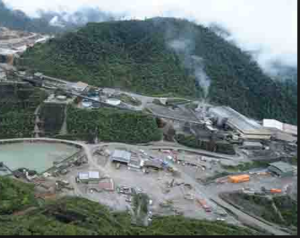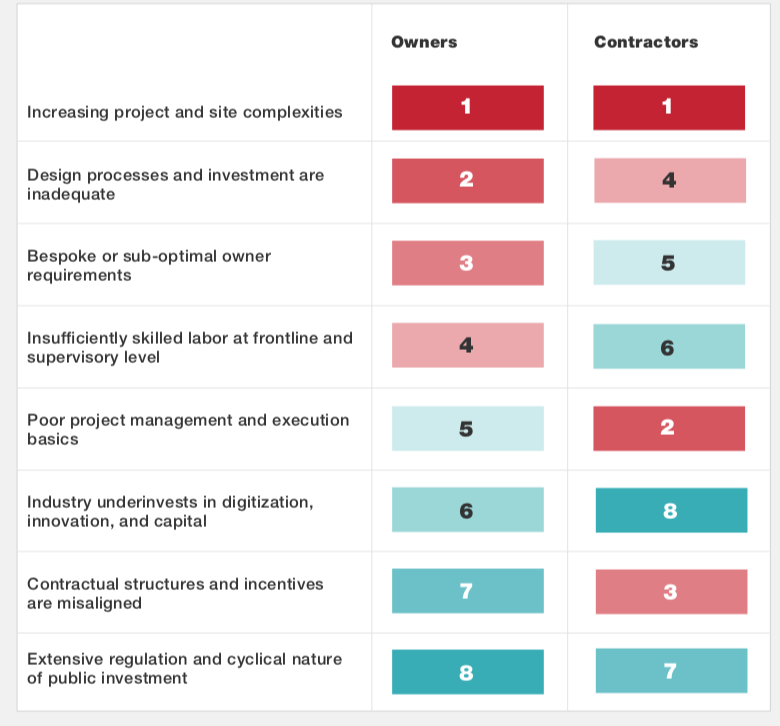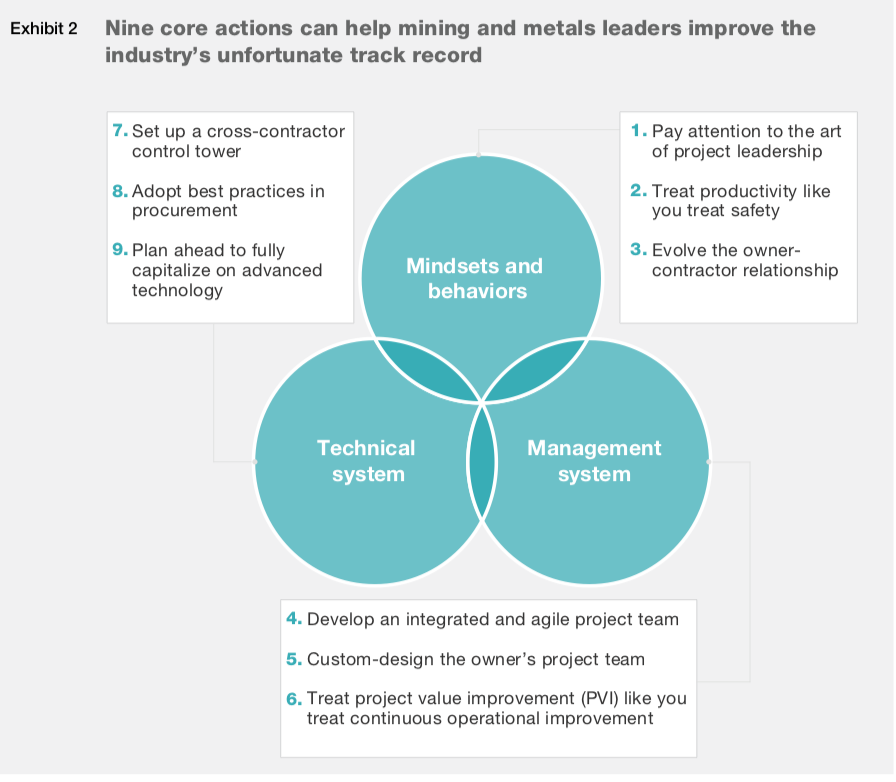Activity in mining is strengthening globally, according to a recent report by consultancy McKinsey & Co. The report identifies nine issues mining companies need to address if they are to be successful in the anticipated upturn.

Investment in mining is returning.
‘Demand is growing, commodity prices are on an upswing, and new capacity is needed to compensate for mine depletions,’ the report says.
‘Under these conditions, we expect investments to increase by about 9 per cent per year until at least 2022, particularly in precious metals, copper, and other base metals.
‘It’s clear: the industry is ready to build again.’
Mistakes
The McKinsey report says during the last commodity supercycle, ‘metals and mining capital projects were plagued by extensive cost overruns and schedule delays’.
The report looked at 35 large mining projects completed between 2002 and 2015. Thirty of them went over budget and 27 were significantly delayed.
‘As a result, companies experienced financial distress and many senior executives lost their jobs.
‘During the recent commodity downturn, metals and mining companies predictably scaled down their investments, with annual capital expenditures (capex) declining by about 15 per cent per year between 2012 and 2016.
‘There is disagreement on what caused the poor performance issues in the past.’
‘Today, however, that trend is changing.’

Owners and contractors differently rank the root causes of poor project outcomes. Source: McKinsey
Priorities
The report found that there is disagreement on what caused the poor performance issues in the past.
‘Numerous explanations have been given for the troubling track record during the last super cycle, from poor project oversight to regulatory hurdles to growing geological and project complexities.
‘Nine factors that should be looked at to avoid previous mistakes.’
‘In our survey of 44 large projects, we found that owners and contractors are misaligned on the root causes behind these poor outcomes.
‘Yet the results provide valuable insights as to what must change.’
Nine imperatives
The McKinsey report identifies nine factors that should be looked at to avoid previous mistakes:
- Paying attention to the art of project leadership. ‘Successful projects couple the science with the art of project leadership: “soft” factors such as mindsets, attitudes, and organisational culture that can be the hardest to embed.’
- Treat productivity in the same way as safety. ‘Safety has always been treated with paramount importance—as it should be. Why not take the same approach to productivity?’
- Avoid rigid and adversarial relationships with contractors. ‘Mining and metals companies should learn from large infrastructure developers and consider relational contracting.’
- Develop integrated and agile project teams and remove silos. ‘Companies should adopt an operating model that ensures all key participants see themselves as part of a unified project organisation.’
- Custom design each project team. ‘One size does not fit all. Instead, team set up and size should flow from a detailed assessment of project risk, complexity, and contracting model.’
- Treat project value improvement the same way as continuous improvement. ‘Mining project owners frequently treat PVI as a one-off exercise at a late stage in the project, resulting in undesirable trade-offs.’
- Set up a cross-contractor control tower. ‘True project control towers should integrate cost and schedule management tools with a war room and a strict meeting structure to establish a daily “drum beat”.’
- Adopt best practices in procurement. This can be done by creating a joint owner-contractor procurement strategy and involving procurement and contracting teams early in the process. Assessing the ‘total cost of ownership’ is also important.
- Plan ahead to capitalise fully on new technology. ‘Owners should make their technological aspirations an integral part of developing a project’s scope, execution, construction, and operating strategy.









Speak Your Mind